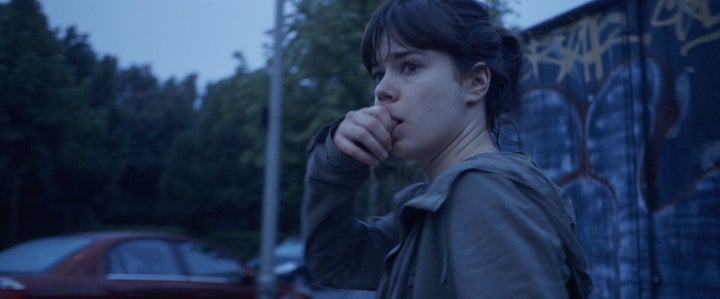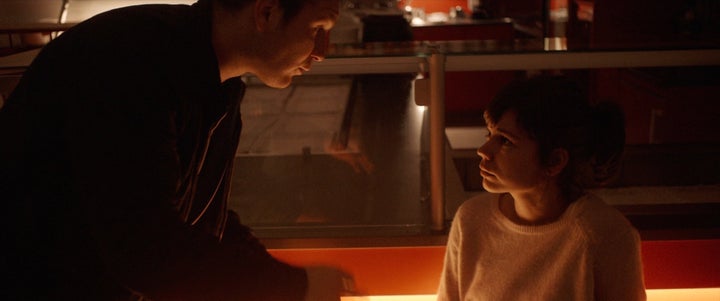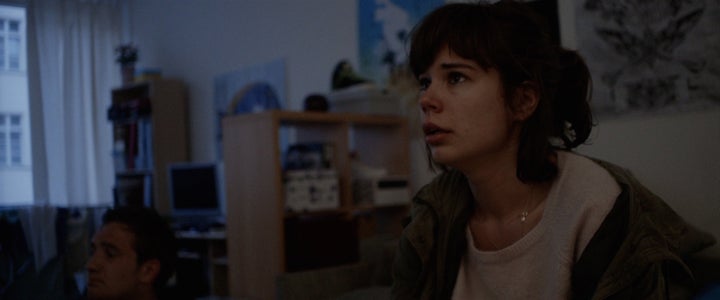
Hitchcock tried it in "Rope." Alejandro G. Iñárritu attempted it in "Birdman." And "The Russian Ark" pulled it off for a full 99 minutes. But German actor-turned-filmmaker Sebastian Schipper, along with cinematographer Sturla Brandth Grøvlen, has made the unthinkable possible in "Victoria," filming a single two-hour-and-18-minute take. No edits, no cuts, no trickery. Just one shot.
The heist thriller follows the titular young woman from Madrid (Laia Coasta) over the course of one night in Berlin. Victoria meets a group of young German guys at a club and the first part of the film follows them (literally) as they party in the streets and smoke joints on rooftops. But the pulse heightens when one of the guys, Sonne (Frederick Lau), asks Victoria to help him and his friends with a mysterious task. Up for adventure, Victoria agrees, only to soon learn that she's been roped into an impromptu bank heist.
The sudden thrill of improvisation is precisely what makes "Victoria," which screened at the Toronto International Film Festival last month, so captivating. While a script and shooting plan were imperative in making a one-shot film possible, it's the rawness and realness of the cast's adrenaline-charged performances, especially Coasta's, that elevates "Victoria" beyond a mere gimmick. Before the fest, The Huffington Post sat down with Schipper in New York to hear how he pulled off such a daring feat, and the challenges that almost derailed it from happening.

First of all, how did you do it?
We just did it! [Laughs] I had this idea and we got started, we told everybody and then we had to do it. Then we realized, "That’s impossible."
Did it start off as a crazy idea you didn’t think would happen, but slowly became possible?
It definitely started off as a crazy idea. [...] The movie’s not expensive, I produced it myself and I was ready to drive it up the wall. [...] Sometimes I have an idea -- you see a wild horse and then I want to catch that horse. So eventually I capture it and a lot of times making the film is breaking that horse. Then you own it, but you train it so hard over the process of making the film and financing it that the spirit gets broke[n]. At the end of the day, there’s this kind of half-depressed animal that used to be this beautiful creature. I have a feeling a lot of films are like that. So the idea of shooting this in one take and keeping the process really tight and keeping the craziness in it, that was an idea that we all fell in love with, that helped us through the harsh times when things really did not work.
How long did it take to make?
Two years. From the very first thought. But to be honest, it was probably more like a year. The first year we spent thinking about it. And from putting financing together to when we shot it, that’s a year.
Was never a moment when you felt like the spirit of the film was broken?
No. There was a moment that [I thought] this horse is too wild. This horse you can’t ride. This horse is not a film. There were many moments when I thought, yeah, there’s a good reason why people don’t do this. This is not how it’s been done. The longer we were in the process, the more it taught me it was impossible. Most of the people who gave me money said, "OK, you’re going to do a jump-cut version." Sometimes I say the process of making this film is pretty close to robbing the bank. It’s a crazy idea and you’re like, "Yeah, we’re gonna do that!" I think lots of times maybe robbing a bank is not only the money, but just doing it, now. Not waiting, not behaving, not studying, but right now. Forcing yourself into a party that you’re not invited to, but you totally want to go.
How many cuts were you hoping to make it if one didn't work?
We wouldn’t know. Maybe seven, maybe 300. Maybe it would just be totally different. Maybe it would be three one-takes and kind of make it the way people have done it before with a one-take. Forty-eight hours before we shot the last take, I saw it and it didn’t work. It didn’t work at all.

How many times did you shoot the entire movie?
Three times. Three full times. It worked three times. I mean, technically we’ve done it three times, but only the third one was a film.
What were the problems with the first two?
The first one, nobody took a risk, nobody wanted to fuck it up. Everybody was good, but everybody was holding back. Then I said, "Guys, you gotta go. Don’t be afraid." It was like what Americans would say soccer is like if it’s a draw, nil-nil. That was our first take. It was not entertaining.
And then they created some serious chaos and they broke a lot of rules and it was just a hot mess. Between the the first and the second [takes] there were 10 days. Between the second and the third there were 48 hours. Then I saw the jump-cut version -- and it’s been awhile since I’ve been that disillusioned. I was like, "We failed." But I think now looking back on it, we needed that extra charge, that super-charge of aggression and fighting. I was being a coach maybe at times more than a director, and I think it was good. That was not a fight that ended with big hearts. The tension stayed there, and it stayed until we shot the last take. [Before the third take] we came together and said, "OK, guys, say goodbye to these characters. Don’t perform, you’ve got to feel it. I can only feel what you feel. Don’t portray. You’ve got to go in there, fall in love, flirt, be scared, rob a bank. Don’t be smarter than I am. You gotta do this." And they did. But also, we were very close to disaster.
What were those moments of disaster?
They weren’t explicit in the moment, they were just realizing it’s not possible. And now, of course, I embrace all of that and I understand stuff about the film. [...] A lot of times it [was] moments when we took chances and we didn’t play safe. Maybe we failed, but we look back and we say that was real and that needed to happen. If I look at the film now, the [piano] piece [Victoria] is playing, the "Mephisto Waltz," it’s unplayable in a way. I know somebody said, "Why is she playing that? That’s an unplayable piece." And I said, "Yeah, but that’s how she is because that’s how this film is." We actually had somebody [else] perform it. She was a Korean student. I said, "Play it with more emotion. I’m not asking you to make mistakes, but this is the 'Mephisto Waltz.' Make the devil dance." People that know, hear that this is not perfection.
The more we worked on the film, the more Laia became Victoria. And Victoria [the character] is like the idea of the movie, of shooting the film in one take. I think that’s also why she’s robbing the bank. We’ve talked a lot about it. Would she do that? Would a person do that? Now I’m looking at the film and I’m thinking, the one person that needs this robbery is her. The guy in the garage just wants his money back, the bald guy wants to pay his debt, and his buddies don’t want to let him die. None of them really want it. She’s the one that really grabs that and, probably pre-consciously, says, "If I do this, I will never be the same again." But I think she knows, she understands this is her chance to really do something.
This interview has been edited and condensed.
"Victoria" opens Oct. 9.
Also on HuffPost:

